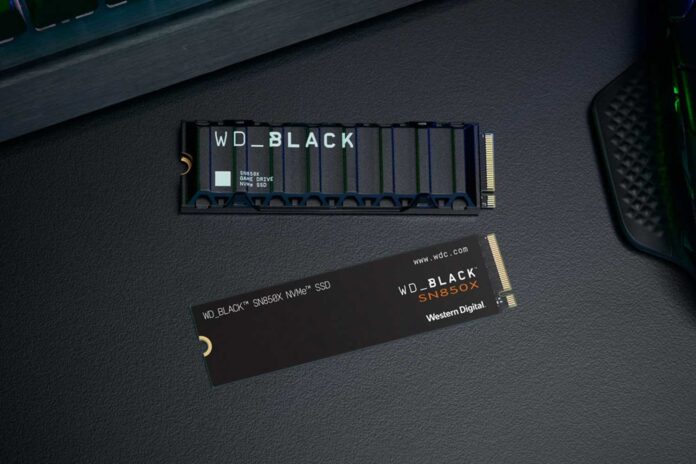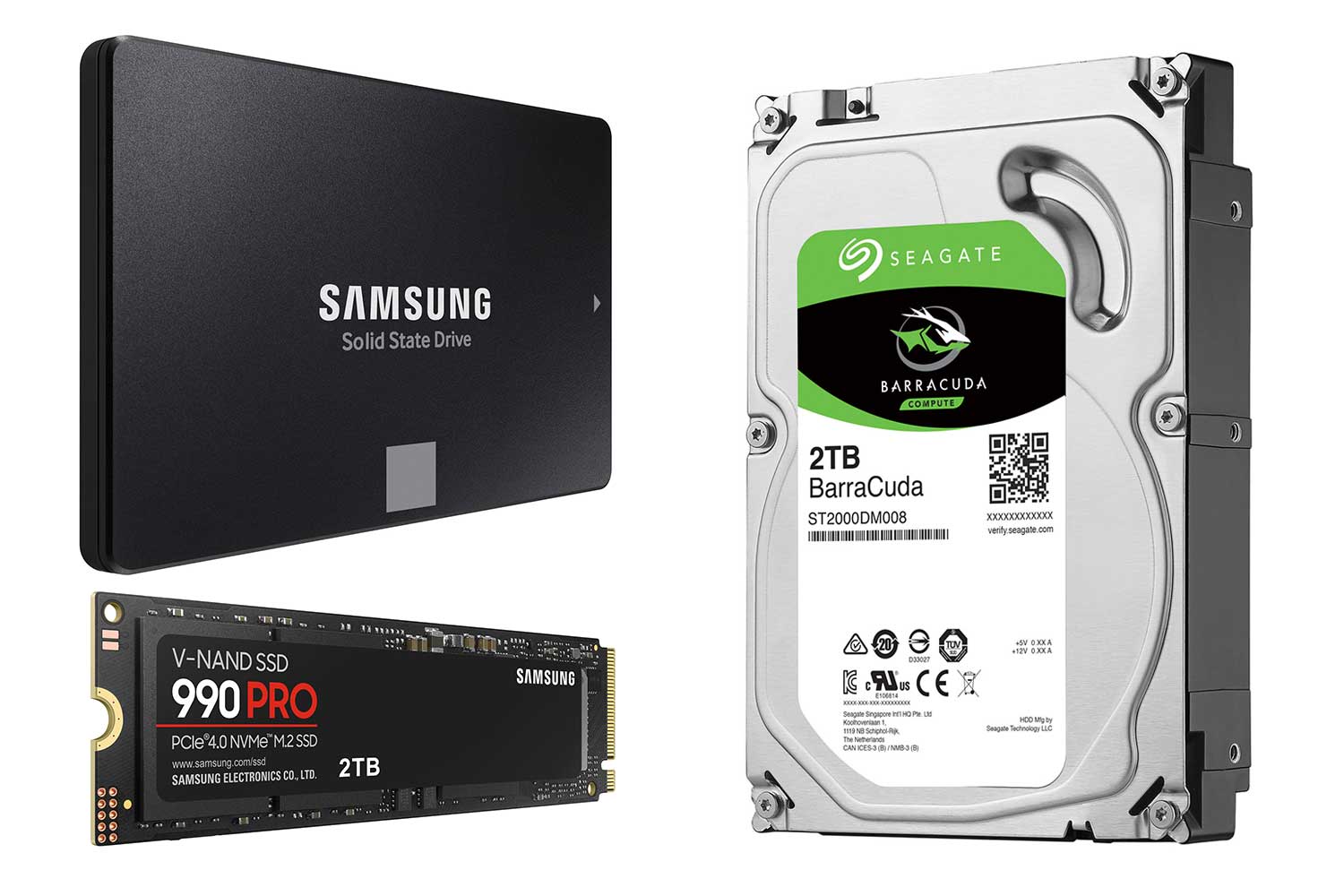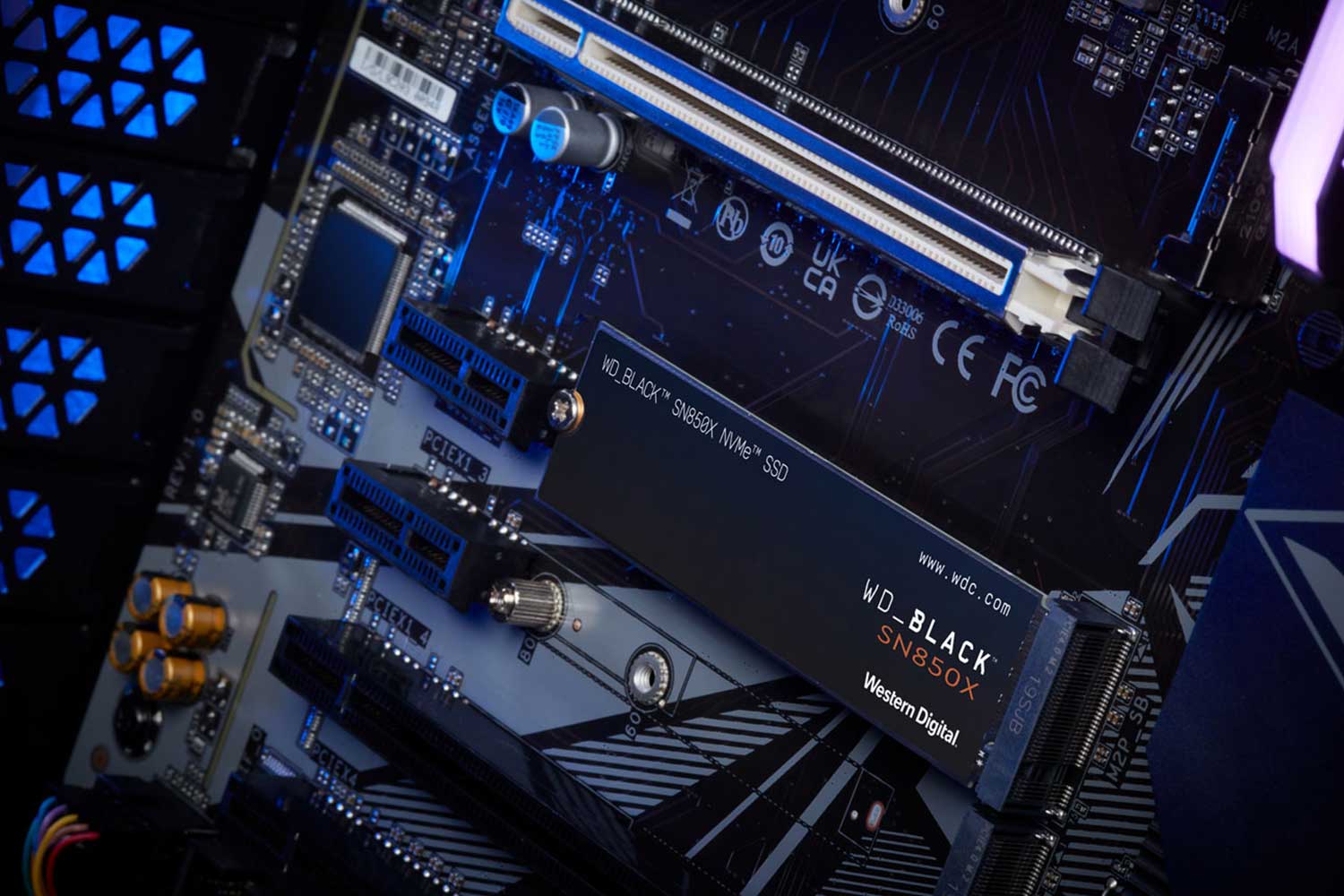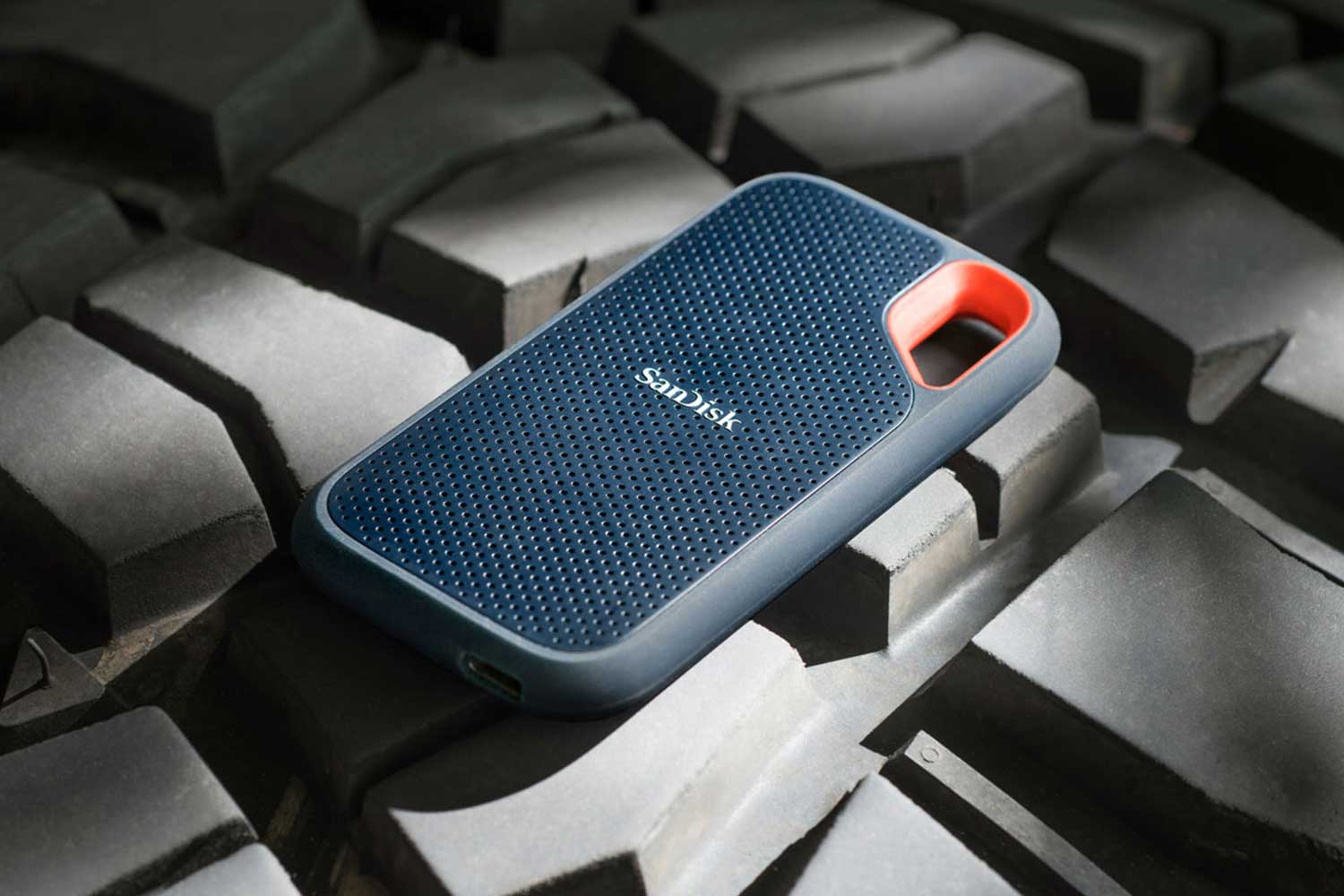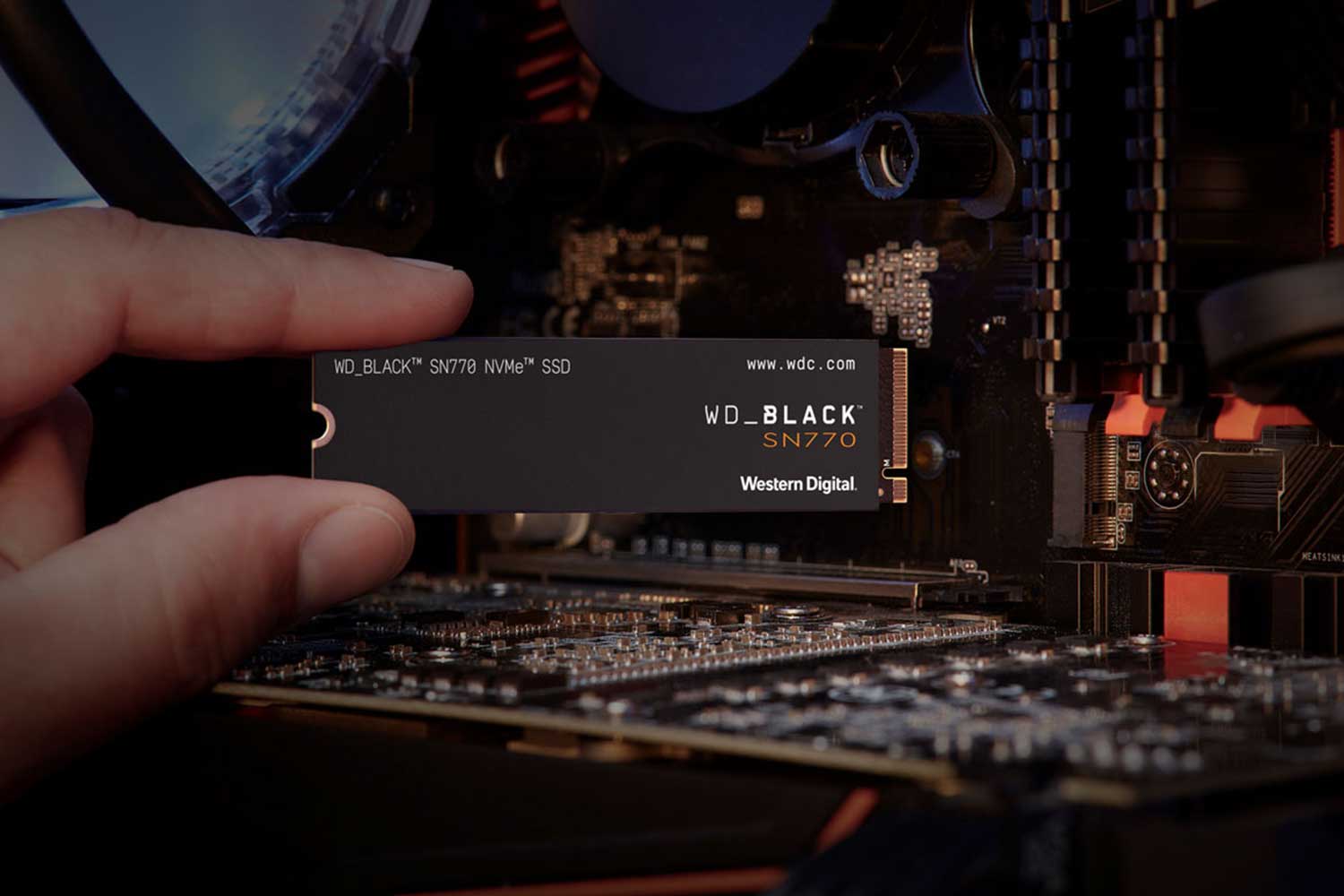Upgrading to a solid-state drive (SSD) can dramatically increase your computer’s performance, delivering faster speeds, improved reliability, and improved power efficiency.
Whether you’re a gamer looking for faster load times or a professional looking for a more robust storage solution, SSDs offer significant improvements over traditional hard drives. However, to get the most out of your upgrade, it’s essential to ensure compatibility with your system.
This guide will help you navigate key factors like motherboard compatibility, form factor, and BIOS updates to ensure your new SSD fits perfectly into your setup.
Understanding the Basics of SSD Compatibility
When we talk about SSD compatibility, we’re referring to several aspects that determine whether an SSD can work with your computer. These include interface, form factor, capacity, and other technical specifications. Let’s break them down into easier-to-understand terms.
What does SSD compatibility mean?
In simple terms, SSD compatibility is whether it can be properly installed and function in your computer. It depends on whether the SSD’s interface (how it connects to your computer), form factor (its physical size and shape), and other features are compatible with what your computer can support.
SSD vs HDD: Why SSDs are the Modern Choice?
Before we get into compatibility, it’s important to understand the key differences between SSDs and HDDs . For decades, HDDs have been the standard for storage, using spinning magnetic disks and mechanical read/write heads. While HDDs are generally cheaper per gigabyte, they have several limitations, such as slower speeds and a higher risk of mechanical failure due to their moving parts.
SSDs , on the other hand, use flash memory, which has no moving parts. This gives them a series of advantages that make them the preferred choice for modern systems:
- Speed : SSDs are significantly faster than traditional hard drives, which translates to faster boot times, faster application loading, and smoother overall performance, especially in games and software.
- Reliability : With no moving parts, SSDs are less prone to physical damage and mechanical failure, making them more durable and reliable.
- Energy efficiency : SSDs consume less power, helping extend the battery life of laptops and reduce power consumption of desktop computers.
Given these benefits, SSDs are now the preferred choice for new builds and system upgrades, despite their higher cost per gigabyte than hard drives.
Important Factors Affecting Compatibility
When choosing an SSD, it is essential to consider several compatibility factors to ensure that the drive will work properly with your system. Here is an overview of the most important factors:
1. Interface: The interface determines how the SSD connects to your motherboard, and it has a direct impact on performance and compatibility.
- SATA : These SSDs use the SATA interface and are most compatible with both older and newer systems. They offer good performance (up to 600 MB/s) but are slower than NVMe or PCIe SSDs.
- NVMe : NVMe SSDs use the PCIe interface and offer significantly higher speeds; up to 7000 MB/s. However, they require modern hardware with M.2 slots, making them ideal for high-performance tasks like gaming or video editing.
- PCIe : These SSDs connect directly to the motherboard’s PCIe slots and offer the best performance. They are ideal for users looking for extreme speed and reliability.
Example: If you are upgrading an older desktop computer, a SATA SSD is probably your best option due to its wider compatibility. However, for new builds or high-performance tasks, an NVMe or PCIe SSD is the best choice.
2. Form Factor: Form factor refers to the physical size and shape of the SSD. It is essential to ensure that your SSD will fit inside your system to avoid installation issues.
- 2.5” SATA SSDs : These are the most common and fit into the same slots as traditional hard drives.
- M.2 SSDs : These are much smaller and attach directly to the motherboard. They come in different lengths, so it’s essential to check your motherboard’s compatibility.
- PCIe SSDs : These plug directly into a PCIe slot on the motherboard and are typically used in high-performance configurations.
Tip: Always check your motherboard specifications to ensure compatibility with the SSD form factor. For example, an M.2 2280 SSD will not fit in a 2230 slot.
3. Capacity: While most computers support any SSD capacity, it’s important to consider whether your operating system and motherboard can handle the amount of storage you’re installing. Older systems may have limits on how much storage they can support.
Power consumption : While SSDs are generally more energy efficient than traditional hard drives, high-performance SSDs, especially those that use the PCIe interface, may require more power. Make sure your power supply can handle the extra load, especially if you’re using a laptop or small form factor PC.
Compatibility between SSD and motherboard
Your motherboard is essentially the backbone of your computer, and it’s essential to make sure your internal SSD is compatible with it. If the SSD doesn’t match the motherboard’s requirements, you’ll run into problems. Let’s see what to check.
Check motherboard support for different internal SSD interfaces
The first thing to do is to check what type of SSD interface your motherboard supports. Does it have a SATA slot, an M.2 slot, or both? If your motherboard only has SATA slots, you’ll be limited to SATA SSDs. On the other hand, if it has an M.2 slot, you may be able to take advantage of faster NVMe SSDs. Some motherboards also support PCIe SSDs, which offer the best performance.
Tip : Check your motherboard manual or manufacturer’s website to confirm what types of SSDs it supports.
Make sure your SSD fits your motherboard’s M.2 or SATA slots
This step is essential to avoid installation problems. It is important to check your motherboard specifications to determine the size and type of available slots.
For M.2 SSDs : Motherboards often support different M.2 sizes, such as 2280 (22mm wide, 80mm long). It is essential to confirm the exact size of the M.2 slot on your motherboard, as purchasing an SSD with the wrong dimensions (such as a 2230 SSD for a 2280 slot) will result in a failed installation.
For SATA SSDs : Make sure your motherboard has an available SATA port and that your SSD’s form factor (typically 2.5″ for SATA drives) fits in your enclosure.
By matching the dimensions of your SSD to the available slot on your motherboard, you can avoid the frustration of receiving a drive that doesn’t fit or connect properly. For example, if your motherboard supports M.2 2280 and you purchase an M.2 2230, the SSD will not be compatible, causing delays in your upgrade process.
BIOS Updates and Their Role in SSD Internal Compatibility
Even if your SSD is physically compatible, it may not be recognized by your system without a BIOS update. The BIOS (Basic Input/Output System) is the firmware that controls the basic functions of your computer and often requires updates to support newer hardware, including SSDs.
Why BIOS updates are important :
- Hardware Recognition: An outdated BIOS may not have the necessary instructions to recognize modern SSDs, including NVMe and PCIe drives.
- Performance Improvement: In some cases, updating the BIOS can optimize the performance of your SSD by enabling newer features.
Tip : Before installing a new SSD, visit your motherboard manufacturer’s website and check if a BIOS update is available. Many manufacturers release updates specifically designed to improve compatibility with SSDs.
Comparison table: Motherboard support for SSD interfaces
| Motherboard Type | Supported SSD interfaces | Recommended SSD drive type |
| Older Motherboards | HOURS | 2.5″ SATA SSD |
| Modern Motherboards | SATA, M.2 | M.2 NVMe SSD |
| High performance | SATA, M.2, PCIe | PCIe SSD drive |
Compatibility between SSD and operating system
Even if your SSD is physically compatible with your motherboard, it’s important to make sure your operating system (OS) can support it. Compatibility issues here can prevent the SSD from being recognized or being used to its full potential.
Modern operating systems like Windows 10/11 , macOS, and many Linux distributions support most SSDs out of the box. However, older operating systems may not support newer SSD technologies, especially NVMe. If you’re using an older operating system, you may need to upgrade it or install additional drivers to ensure compatibility.
Formatting and Partitioning SSDs for Different Operating Systems: When you install a new SSD, it may not be formatted. Formatting prepares the SSD to store data, and different operating systems prefer different file systems:
- Windows : Utilise NTFS.
- macOS : Uses APFS or HFS+.
- Linux : Ext4 is common.
Tip : If you are using multiple dual-boot operating systems, you may need to partition your SSD into multiple sections, each formatted for a different operating system.
Cloning Existing Drives to New SSDs: If you’re upgrading from an old SSD or hard drive to a new one, you can clone your existing drive. Cloning involves copying everything from one drive to another so you don’t have to reinstall your operating system or programs. There are a number of tools that make cloning a simple process, ensuring that your new SSD is a perfect replacement for your old drive.
External SSD Compatibility
Internal SSDs install directly into your computer, while external SSDs are a convenient way to expand storage capacity or transfer data between devices. They connect via USB, making them very flexible for use on a variety of devices. However, it’s essential to ensure compatibility with your device to avoid performance issues.
You can use external SSDs with a variety of devices, including PCs, laptops, gaming consoles, and smartphones. However, not all devices support all types of external SSDs. Here are some key considerations and examples:
Gaming consoles : Most modern gaming consoles, like the PlayStation 5 and Xbox Series X, support external SSDs for additional storage. However, these consoles typically require a USB 3.0 connection or higher for optimal performance. Make sure the SSD you choose uses the correct interface to ensure your games load quickly and perform well. The PlayStation 5 requires a USB 3.0 external SSD to run games from external storage. Using an older USB 2.0 drive will significantly limit speed and impact game performance.
Laptops and PCs : Almost all modern laptops and PCs support external SSDs, but you’ll need to check what types of USB ports are available. While USB 3.0 is common, many newer laptops now come with USB-C or Thunderbolt ports, which offer faster data transfer speeds. If your laptop has a Thunderbolt 3 or 4 port, using an external SSD like the SanDisk Extreme PRO Portable SSD can offer transfer speeds of up to 2000MB/s, which is ideal for quickly and efficiently transferring large files, such as 4K videos or photo libraries.
Smartphones and tablets : Some smartphones and tablets, especially those running Android, support external SSDs using a USB-C connection. This makes it easy to back up your data or transfer files on the go. Make sure your device has the right port and supports OTG (On-The-Go) functionality for external drives.
Importance des interfaces USB (USB 3.0, USB-C, Thunderbolt)
The speed and performance of an external SSD depends heavily on the USB interface:
- USB 3.0 : Provides good performance for most users.
- USB-C : Faster than USB 3.0 and increasingly popular.
- Thunderbolt : The fastest option, ideal for high-performance tasks like video editing.
Tip : Not all devices support Thunderbolt, so check your device’s specifications before investing in a Thunderbolt SSD.
Practical tips for using external SSD drives
Using an external SSD is simple, but here are some tips to ensure optimal performance:
- Use high-quality cables : Longer or poor-quality cables can reduce data transfer speeds. Invest in short, high-quality cables for the best performance. This concept is similar to how cable length affects signal quality in AV systems, as discussed in our article How Cable Length Affects Signal Quality in AV Systems .
- Check port status : Make sure the USB ports on your device are clean and in good condition to avoid connectivity issues.
Table: Comparison of external SSD interfaces
| Interface | Speed | Ideal for |
| USB 3.0 | Up to 5 Gb/s | General storage, game consoles |
| USB-C | Up to 10 Gb/s | Laptops, PCs, fast data transfers |
| Port Thunderbolt | Up to 40 Gb/s | High performance tasks, video editing |
Compatibility between SSD and enclosure
The physical fit of your internal SSD in your computer case is another important factor. Whether you’re installing a 2.5” SATA SSD or an M.2 drive, it’s essential to ensure that your case has enough space and that the SSD can be securely mounted.
Different SSDs require different mounting solutions. A 2.5” SATA SSD typically requires a mounting bracket or cage inside the enclosure, while an M.2 SSD screws directly onto the motherboard. Make sure you have the necessary hardware before you begin installation.
Airflow and cooling considerations: SSDs typically generate less heat than traditional hard drives, but they can still get hot under heavy use, especially NVMe drives. Ensuring good airflow throughout your enclosure can help maintain optimal temperatures. If your SSD gets too hot, it may throttle back to prevent damage, which can impact performance.
Installation tips for internal SSDs: When installing an SSD, take your time and follow the instructions carefully. Make sure the drive is securely connected to the motherboard and power supply. If you are installing an M.2 drive, make sure it is seated and screwed in properly.
Practical tips for choosing the right SSD drive
Choosing the right SSD isn’t just about finding the right one for you, it’s also about making sure it meets your performance and budget needs. Follow these helpful tips to make an informed choice:
Make sure all components fit and work together
Before purchasing an SSD, it is essential to check its compatibility with your system. This is not just about making sure the drive physically fits your system:
- Check your motherboard slots : Determine if your motherboard supports SATA , M.2 , or PCIe interfaces . Check your motherboard manual or specifications to confirm that the interface is adequate.
- Power supply : Make sure your power supply has the necessary connectors, especially for high-performance PCIe SSDs, which may require more power.
- Cooling Considerations : For high-end NVMe or PCIe SSDs, ensure your enclosure has adequate airflow and cooling options to prevent overheating.
Adapt your SSD to your system needs
Different tasks require different levels of performance. Here’s how to choose an SSD based on your specific use case:
- General Use : For everyday activities like web browsing, office work, and light gaming, a SATA SSD is a great choice. It offers a significant performance boost over traditional hard drives, while being cost-effective.
- Gaming and Editing : If you’re a gamer or into video editing or 3D rendering, an NVMe SSD or PCIe SSD is your best bet. These drives offer faster read/write speeds, faster load times, and smoother performance for data-intensive applications.
- Professional Work : For professionals who deal with large files or complex tasks such as video editing or software development, a high-capacity PCIe SSD is the ideal choice. It offers faster processing and the ability to efficiently handle large data sets.
Common Pitfalls to Avoid When Selecting an SSD
By avoiding these common mistakes, you can choose a high-performance SSD that is compatible with your system:
- Interface mismatch : Make sure the SSD interface (SATA, NVMe, or PCIe) matches the available slots on your motherboard. Installing an NVMe SSD into a SATA slot, for example, will result in slower performance.
- Ignore capacity limits : Check if your operating system or motherboard has any storage capacity restrictions. Some older systems may not support SSDs larger than 2TB without a BIOS update.
- Buy Cheap SSDs : Lower quality SSDs often have a shorter lifespan and lower performance. It is best to invest in a reliable brand that is known for its durability and speed to avoid any problems later on.
Installation and configuration tips
Once you’ve chosen your SSD, the next step is to install it. Installation is usually straightforward, but there are a few tips to keep in mind to make sure everything goes smoothly.
How to Properly Install Internal and External SSD Drives
Whether it’s an internal or external installation, the following steps ensure a smooth installation:
For internal SSD drives :
- Mount the SSD securely in your enclosure using the appropriate brackets or directly to the motherboard for M.2 drives.
- Connect the SSD to your motherboard and power supply.
- Make sure all cables are securely attached.
For external SSD drives :
- Simply plug the SSD into an available USB port. Use a short, high-quality cable to avoid performance issues.
Ensure efficient cable management
Good cable management keeps your system looking tidy and improves airflow, which can help keep your SSD cool. Use zip ties or Velcro straps to bundle cables and keep them away from fans and other components.
Troubleshooting Common SSD Issues
If your SSD is not recognized or not working as expected, follow this troubleshooting process to resolve common issues:
Not recognized by the system
- Check the connections : Make sure all cables are securely connected and the SSD is properly seated in its slot. Loose connections are a common cause of the SSD not being detected.
- Update BIOS : If the SSD is still not recognized, update your system BIOS. An outdated BIOS may not support newer SSD models or capacities.
- Check interface compatibility : Make sure your SSD is plugged into the correct interface (e.g. SATA for SATA SSDs, M.2 slot for NVMe SSDs). Incorrect connections may result in the drive not being detected.
Performance issues.
- Check for firmware updates : Visit the SSD manufacturer’s website and check for firmware updates. Firmware updates can fix performance issues and improve the efficiency of the SSD.
- Check for correct interface usage : Make sure your SSD is using the correct interface and port (for example, make sure your NVMe SSD is in an NVMe-supported M.2 slot). Plugging an SSD into a slower interface may reduce its performance.
- Optimize the file system : If performance issues persist, verify that the SSD is formatted with the correct file system (for example, NTFS for Windows or APFS for macOS). Inconsistencies between file systems can cause the drive to slow down.
Installation failures
- Check Compatibility : Double-check that the SSD is compatible with your motherboard, operating system, and BIOS version. Incompatible components may cause the installation to fail.
- Format the SSD correctly : Make sure the SSD is formatted to the correct file system for your operating system. Some SSDs need to be partitioned and formatted before they can be successfully installed.
- Check manufacturer resources : If you continue to have problems, check the SSD manufacturer’s support page or user manual for troubleshooting tips. They may have solutions specific to your model or system configuration.
Ensure seamless SSD compatibility for a successful upgrade
Navigating SSD compatibility can seem complex at first, but by understanding key factors like interface types, form factors, and BIOS updates, you can avoid common issues and ensure your new SSD integrates seamlessly with your system. Following these steps will ensure an efficient upgrade that maximizes your computer’s performance.
Key takeaways
- Always check the SSD interface and format against your system specifications.
- Do not overlook the importance of BIOS updates to ensure compatibility with new SSD models.
- Verify that your operating system supports the SSD and that it is properly formatted for optimal operation.


